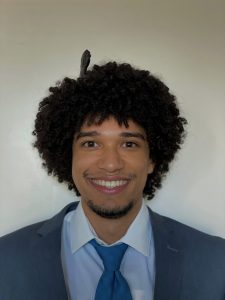
UW ECE alum Kyle Johnson (left) and UW ECE doctoral student Adhyyan Narang (right) have been named inaugural Amazon Fellows by the UW + Amazon Science Hub. Johnson is pursuing a doctoral degree at the Paul G. Allen School of Computer Science & Engineering, where he is advised by Vikram Iyer, a recent UW ECE graduate and assistant professor of computer science and engineering. Narang is advised by UW ECE Professors Lillian Ratliff and Maryam Fazel.
Adapted from an article by UW + Amazon Science Hub
UW ECE alum Kyle Johnson and UW ECE doctoral student Adhyyan Narang have been named inaugural Amazon Fellows by the UW + Amazon Science Hub. The Science Hub is directed by Joshua Smith, who is the Milton and Delia Zeutschel Professor in Entrepreneurial Excellence at UW ECE. Johnson and Narang will receive three quarters of funding to pursue independent research projects in robotics and adjacent areas in AI. They will also have an opportunity to take part in paid summer internships at Amazon where they can work directly with Amazon researchers to gain valuable industry insight and experience.
Learn more below about Johnson and Narang’s backgrounds and their research projects.
Kyle Johnson
Johnson is researching autonomous robotic platforms for swarms of insect-scale devices that can crawl, roll, walk, jump, glide or fly. His work demonstrates novel solutions to the size, weight, power, sensing and communication limitations of commercially available technologies. With onboard power, sensing and control, his robots aim to culminate in fully autonomous and truly bio-inspired systems. He received his bachelor’s degree from UW ECE in 2020 and master’s degree from the Paul G. Allen School of Computer Science & Engineering in 2022. Johnson is currently a third-year doctoral student at the Allen School, where he is advised by Vikram Iyer, a recent UW ECE graduate and assistant professor of computer science and engineering.
Project Title: Enabling Autonomy for Insect-Scale Robots
To create autonomous swarms of insect-scale robots that can fly, glide, run, jump, crawl and/or roll, Johnson has researched bio-inspired structural designs and hybrid actuation solutions to address the size, weight, power, sensing and communication limitations of robots at the sub-gram and millimeter-scale. To build robots that have onboard power, sensing and control (autonomous), Johnson and his team leverages a hybrid actuation approach with bio-inspired structural designs.
Using a combination of electromagnetic solenoids, permanent magnets and the bistability demonstrated in leaf-out origami, Joshnson and his team have experimentally achieved crawling, jumping and gliding locomotion. Using a combination of mm-scale motors and piezoelectric bimorphs, they have theoretically defined the controls for devices that fly, run and roll.
Adhyyan Narang
Narang is a third-year doctoral student in the labs of UW ECE Professors Lillian Ratliff and Maryam Fazel. He is interested in answering fundamental theoretical questions in supervised machine learning and reinforcement learning that can provide practical prescriptions. He holds a bachelor’s and master’s degree from UC Berkeley in electrical engineering and computer science.
Project Title: Multiagent reinforcement Learning for robot co-ordination
In many applications, multiple robots seek to co-ordinate in order to solve tasks that are dynamically specified: for instance, robots on a warehouse floor that need to move products around, with new orders received at any time. Traditional centralized planning approaches cannot account for the dynamic nature of the tasks, and single-agent reinforcement learning solutions scale poorly with the size of the problem. Narang’s team considers multiagent RL approaches that can trade-off between optimality and runtime efficiency.
Learn more about the Amazon Fellowship and the rest of the fellows here.

